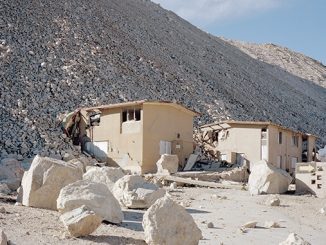
Issue 32 called for provocations into the human-nature relation through the questioning power of the moving image. In particular, the editors looked for contributions that focused on the function of the moving image as a material artefact or visual object within an ecological milieu or image-world, where the human relation to nature is rendered open-to-question. Thinking about the moving image extends to many formats, including panoramas, dioramas, video art installations, online digital displays, scientific data schematisation and other visual apparatuses, as well as narrative and non-narrative film and cinematic projection. We encouraged ecological approaches to the moving image, broadly comprising “film, video, broadcast television, moving computer-generated imagery, and, in short, any mass-produced moving image technologically within our reach now and in times to come” (Carroll xxi).
This issue considers “ecological webs” as image-worlds or umwelten and engages critically with the modes of non-human signification enacted within moving image media. Theoretical advances in ecocinema, “eco-cinecriticism” and “green film criticism” (Ivakhiv 1) over the last twenty years highlight that “the cinematic experience is inescapably embedded in ecological webs” (Rust and Monani 2). The question of what moving images do ecologically calls to attention related questions of aesthetics, poetics, politics, ethics, mediation and representation of the nature of nature and the non-human. Towards these aims, the editors welcomed submissions from any of the disciplines that concern themselves, in one way or another, with the moving image, including film and cinema studies, new media and video, film-philosophy, literary studies, environmental humanities and associated disciplines.

